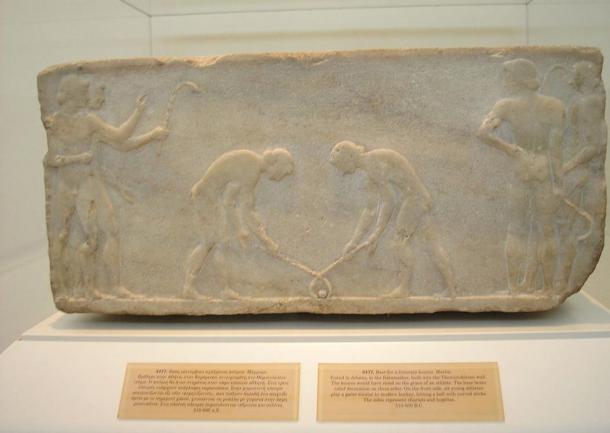The gladiatorial ring of ancient Rome was an infamously bloody, savage, and deadly sport, with hardened warriors battling to the death for the entertainment of the masses. The Mesoamerican ball game, Uluma, was equally as perilous, as a fast-paced, ruthless game tied to religious ritual, in which players were at risk of execution or sacrifice. But not all ancient sports were bloodthirsty, violent challenges. Some, such as golf, were an enjoyable and challenging competition with an ancient pedigree.
Golf is a sport with ancient origins that has endured into our modern era, adapting and evolving through time to fit the age. Golf, in its modern incarnation, is understood as a ball and club sport wherein players hit small balls into holes from a distance, over various terrains and at a series of starting points. Aside from the risk of lightning strike or aggressive competitors, it’s a sport in which death is somewhat unlikely – which might be one of the reasons it has lasted so long and is now enjoyed around the world.
While it’s often assumed that golf originated in Scotland, that’s only part of the story. Historians still debate the true origins of the ball and club sport that descended from the ball and stick games of ancient eras around the globe.
Ancient Ball and Stick Games: Egyptian, Greek, and Roman
Recorded ball and stick games stretch back to at least 2600 BC in Middle Egypt, with tombs displaying paintings and bas-reliefs showing men with clubs or sticks and balls. The name of these ancient Egyptian games remain unknown, but it is said they were probably exported to the Mediterranean through trade.
The ancient Greeks continued the stick-and-ball game traditions, and carvings depict a sport that appears to be similar to modern field hockey.

Bas relief approx. 600 BC, Kerameikos, Athens, shows men with hooked clubs or sticks playing with a ball. These ancient ball-and-stick games morphed into field hockey, ice hockey, and golf. Public Domain
Researchers connect modern golf with the ancient Roman game of Paganica (or Paganicus), wherein a wool or leather ball was stuffed with feathers and hit with bent wooden clubs. The Roman balls were bigger than the modern incarnation, approximately 5.5 inches (15 centimeters) in diameter. The object of Paganica was to strike the ball and hit an appointed target, a rock or tree.
As the Roman Empire spread across Europe in the first century, so too did their ball games, and the popular sport eventually reached the northern countries.
The Scots Add an Important Element and the Ruling Class Takes Over
 Pride Professional Tee...
Buy New $9.78
(as of 02:10 UTC - Details)
Historians generally agree that the term “golf” came from the Middle Dutch words “colf” or “colve”, which were sticks or bats used in an early ball game, called kolven.
Pride Professional Tee...
Buy New $9.78
(as of 02:10 UTC - Details)
Historians generally agree that the term “golf” came from the Middle Dutch words “colf” or “colve”, which were sticks or bats used in an early ball game, called kolven.
It is said the Scots later added the element of the hole in the ground, and individual athletes rather than teams, which forever separated golf from other ball and stick sports.
In the Middle Ages the game of golf was banned by the Scottish Kings James II and James IV in the 1400s, as it was believed the popularity of the sport interfered with military discipline and archery training. Other such games featuring curved sticks or clubs were also legislated, such as early field hockey (the stick was bent, and so descended the words ‘hooky stick’, or ‘hockey’). Eventually, however, James IV grew to enjoy golf himself, and the popular game spread to England in the early 1500s, and was considered a game for the ruling class.
In 1503 the first record of golf clubs noted, “For golf clubbes and balles to the King that he playit with.”




